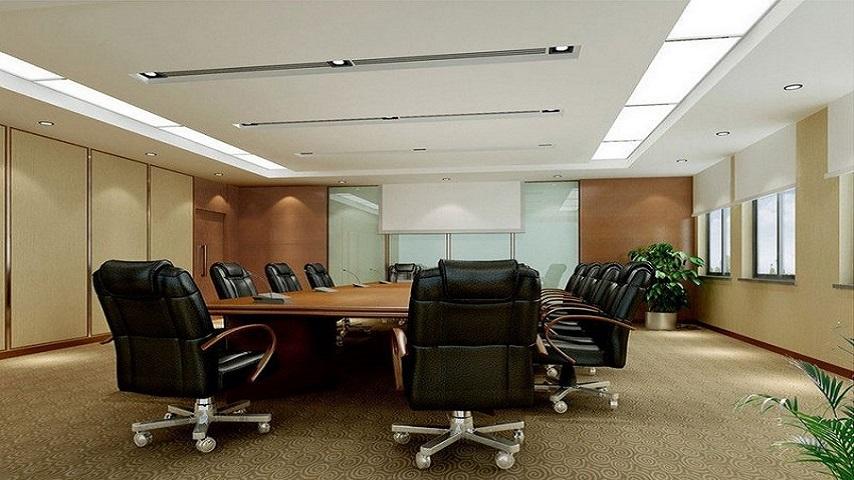Why Modern Workstation Furniture Is the Backbone of a Productive Office

When you walk into an office, one of the first things you notice is the furniture setup. From desks and chairs to collaborative spaces and storage units, furniture isn’t just about aesthetics—it defines how employees work, interact, and perform. In today’s competitive world, where productivity is directly tied to employee well-being and engagement, modern workstation furniture has emerged as the backbone of a productive office.
The Evolution of Workstation Furniture
In the past, offices were often filled with bulky wooden desks, identical cubicles, and stiff chairs that placed appearance above comfort. While such furniture looked professional, it did little to promote health or efficiency. Over time, as workplace culture shifted towards employee-centric approaches, so did furniture design.
Modern workstation furniture focuses on ergonomics, flexibility, and collaboration. Instead of rigid cubicles, offices today prefer open layouts, adjustable workstations, and modular designs that adapt to different work styles. This shift highlights how essential furniture has become in fostering both comfort and productivity.
Ergonomics: The Foundation of Employee Well-being
One of the most critical features of modern workstation furniture is ergonomics. Poorly designed desks and chairs can lead to musculoskeletal issues, back pain, and fatigue—all of which reduce productivity. On the other hand, ergonomic furniture supports posture, minimizes strain, and boosts focus.
- Adjustable chairs with lumbar support reduce back pain.
- Height-adjustable desks allow employees to switch between sitting and standing.
- Keyboard trays and monitor stands help align the body correctly, lowering the risk of repetitive strain injuries.
When employees feel physically comfortable, they are more likely to stay engaged and motivated throughout the day.
Enhancing Collaboration Through Design
Workstation furniture doesn’t just support individual productivity; it also enhances collaboration. Modern offices thrive on teamwork, brainstorming, and innovation. Furniture layouts that encourage open communication—such as shared tables, collaborative pods, and movable partitions—help employees connect easily.
Flexible workstation furniture allows businesses to reconfigure spaces quickly depending on the task. For instance:
- A modular desk system can support solo work in the morning and group discussions in the afternoon.
- Movable chairs and tables can transform a workspace into a meeting area without needing separate rooms.
Such designs create a dynamic workplace where collaboration happens naturally.
Boosting Focus and Efficiency
While collaboration is essential, employees also need spaces where they can concentrate without distractions. Modern workstation furniture addresses this balance by providing both open and private zones.
Acoustic panels, privacy screens, and semi-enclosed workstations help minimize noise and interruptions, allowing individuals to focus on deep work. At the same time, these setups remain flexible enough to keep employees connected to the larger team.
Technology Integration in Furniture
Another major reason why workstation furniture is the backbone of productivity is its ability to integrate with modern technology. In today’s digital age, employees rely heavily on laptops, multiple monitors, and other gadgets. Furniture that accommodates this seamlessly enhances workflow.
Features include:
- Built-in cable management systems to reduce clutter.
- Charging ports and power outlets integrated into desks.
- Monitor arms and docking stations for multi-device setups.
By reducing technical disruptions and keeping workstations organized, technology-friendly furniture ensures smoother operations.
Supporting Employee Wellness
A productive office is not just about output; it’s also about employee wellness. Modern workstation furniture plays a vital role here by promoting healthy habits. For example, sit-stand desks encourage movement, which reduces the risks of sedentary lifestyles. Some offices even introduce treadmill desks or active seating options that keep employees physically engaged during work.
Furthermore, furniture that supports natural light flow, allows for greenery, and creates a welcoming environment contributes to mental well-being. Employees feel more energized and less stressed, directly boosting productivity levels.
Aesthetic Appeal and Company Culture
Modern workstation furniture also enhances the visual appeal of the office, which plays an underrated but crucial role in productivity. A stylish, well-organized office boosts morale, reflects professionalism, and aligns with company culture. Employees feel proud of their workplace, and clients or visitors perceive a strong brand image.
Colors, textures, and materials of workstation furniture can also influence mood and focus. For example, cool tones can create a calming effect, while vibrant colors may inspire creativity and energy.
Cost-Effectiveness in the Long Run
Some organizations hesitate to invest in modern furniture due to initial costs. However, the long-term benefits outweigh the expense. Ergonomic and durable workstation furniture reduces employee absenteeism due to health issues, lowers staff turnover, and boosts productivity. Moreover, modular designs mean furniture can be reused and reconfigured for years, making it a sustainable and cost-effective investment.
The Future of Workstation Furniture
As workplaces continue to evolve with hybrid and remote work models, furniture will adapt even further. Offices are increasingly designing hot-desking setups, flexible seating arrangements, and compact yet efficient workstations that cater to a mix of in-office and remote employees. Technology will play an even bigger role, with smart desks, IoT integration, and wellness-tracking furniture becoming the new standard.
Conclusion
Modern workstation furniture is no longer just an accessory—it’s the backbone of a productive office. By combining ergonomics, flexibility, technology integration, and aesthetics, it supports employee well-being, enhances collaboration, and boosts overall efficiency. In an age where human capital is a company’s greatest asset, investing in the right furniture is not a luxury but a necessity.
The Feeling of Success Begins with a Well-Designed Modern Office Space
From Planning to Execution: What Goes Into a Turnkey Interior Project?
- Art
- Causes
- Crafts
- Dance
- Drinks
- Film
- Fitness
- Food
- Jogos
- Gardening
- Health
- Início
- Literature
- Music
- Networking
- Outro
- Party
- Religion
- Shopping
- Sports
- Theater
- Wellness




